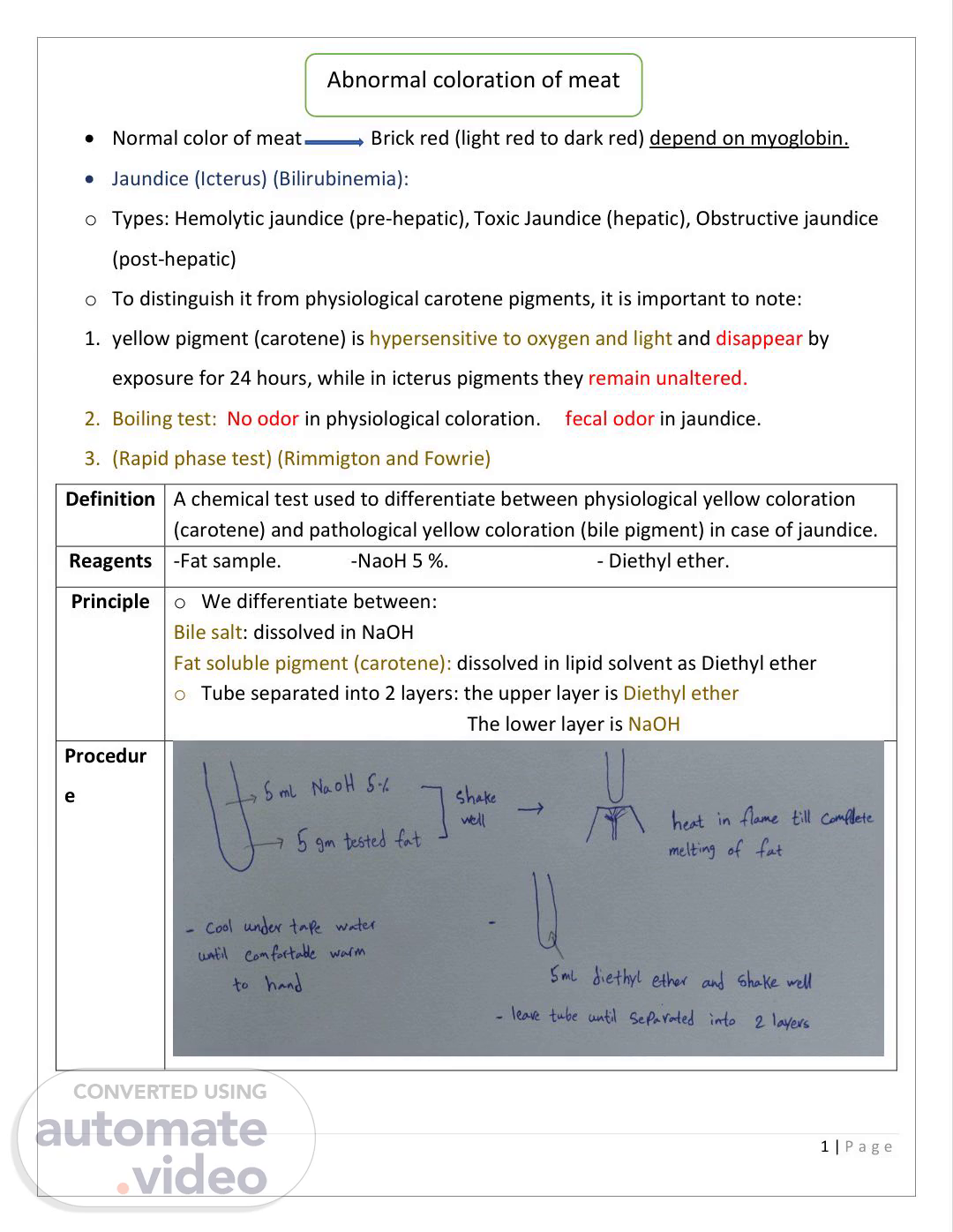Scene 1 (0s)
1 | P a g e • Normal color of meat Brick red (light red to dark red) depend on myoglobin. • Jaundice (Icterus) (Bilirubinemia): o Types: Hemolytic jaundice (pre-hepatic), Toxic Jaundice (hepatic), Obstructive jaundice (post-hepatic) o To distinguish it from physiological carotene pigments, it is important to note: 1. yellow pigment (carotene) is hypersensitive to oxygen and light and disappear by exposure for 24 hours, while in icterus pigments they remain unaltered. 2. Boiling test: No odor in physiological coloration. fecal odor in jaundice. 3. (Rapid phase test) (Rimmigton and Fowrie) Definition A chemical test used to differentiate between physiological yellow coloration (carotene) and pathological yellow coloration (bile pigment) in case of jaundice. Reagents -Fat sample. -NaoH 5 %. - Diethyl ether. Principle o We differentiate between: Bile salt: dissolved in NaOH Fat soluble pigment (carotene): dissolved in lipid solvent as Diethyl ether o Tube separated into 2 layers: the upper layer is Diethyl ether The lower layer is NaOH Procedur e Abnormal coloration of meat.
Scene 2 (40s)
2 | P a g e Result 4. Martin’s test: Definition A chemical test used to differentiate between physiological yellow coloration (carotene) and pathological yellow coloration (bile pigment) in case of jaundice Reagents -alcohol -concentrated H2SO4 Procedure Result Appearance of yellow, greenish, or brownish color converting to blue indicates the presence of jaundice.
Scene 3 (57s)
3 | P a g e Judgment of the two tests: 1- In severe cases: total condemnation for its abnormal color, bitter taste, abnormal fecal odor, and high possibility of food poisoning salmonella presence. 2- In slight cases: keep the carcass for 24 hours in a detention room to give chance for the discoloration to disappear after rigor mortis. If it is good, it passes after confirming of its free from fecal odor and salmonella.
